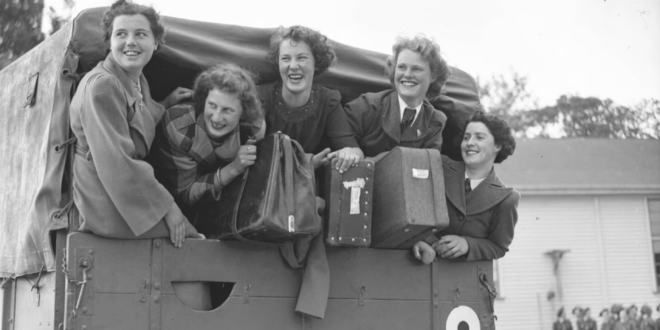Anzac Day is one of our most significant national days of remembrance. It commemorates the service and sacrifice of all New Zealand servicemen and servicewomen. Anzac Day itself has its origins in World War 1 when, on the 25th April 1915, 16,000 Australian and New Zealand soldiers landed at what is now called Anzac Cove, on the Gallipoli Peninsula in Turkey. For most of the soldiers, it was their first time in combat, and by the evening of the first day of arrival, 2,000 had been killed. The landing is now recognised as a military failure.
While no women fought at Gallipoli, they did play a significant role in the Gallipoli Campaign by serving as nurses on hospital ships and in the tent cities erected on the nearby Greek islands of Lemnos and Imbros.
One ship on which they served was the Maheno, with 11 nurses leaving New Zealand on board her on July 11, 1915. The Maheno had previously been a steamer which was used by the Union Steamship Company to carry passengers from New Zealand to Australia. During the Gallipoli Campaign, it carried thousands of wounded soldiers to safety.
Life on board such ships was far from easy for nurses. Although the government had promised they would be treated as officers, many of the privileges that should have been accorded them were withdrawn once the boats were underway. The open deck space to which they had access was limited, and sleeping and dining conditions were crowded.
Once the hospital ships reached their destination, conditions were far from safe. Anchored off Anzac Cove, the boats would sometimes come under fire, and nurses were forced to dodge bullets as they tended to patients on the decks. There were so many patients, that those with less serious injury were quickly shuttled on to the Greek Islands for treatment. When those shuttle boats returned to Anzac Cove to collect more patients, nurses had no time to rest. They spent the hours fumigating wards and theatres, making beds, and rolling bandages.
On the islands of Lemnos and Imbros, life was equally hard for nurses. Some arrived to discover tents and equipment were still awaiting delivery, and there was no sanitation infrastructure of any kind. Medical staff had to resort to sleeping outdoors under blankets. When hospital tents were in use, nurses had to learn new skills, and set to, mending tears in canvas and managing guy ropes. The weather could be ferocious on the islands, and tents regularly blew over. When they stayed upright, they were draughty and difficult to keep clean. Cold weather contributed to frostbite, and gangrene was not uncommon. When supplies ran short or were unavailable, nurses were forced to comfort soldiers with only a simple drink of water.
It is not surprising that, under these conditions, dysentery was rife and water limited. Nurses cut their hair short in an effort to keep lice at bay, and went without baths to save water for the wounded. They dealt with the psychological trauma of seeing hundreds of men at their lowest ebb.
New Zealand nurses were among those who gave their life for the war effort, but when those who survived returned home, they did not receive the same recognition as soldiers, and were often denied proper financial recognition. Today, our early war nurses are remembered in a number of ways including through the Nurses Memorial Chapel in Christchurch (which survived the 2011 earthquake), and the Isabel Clark memorial oak in Oamaru.
This year, on Anzac Day, we remember all who have served and sacrificed their lives for their country, and think especially of our Gallipoli nurses.









Join the Discussion
Type out your comment here:
You must be logged in to post a comment.